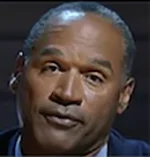 Paul Oestreicher |
“The crisis drags on” is about the last thing an organization, its investors, and its customers want to hear. But that is what’s happening at one of the world’s most venerable companies.
Unfortunately, the manner in which Boeing is communicating—or not—has become its own news story. And, while there have been hundreds of articles and reports on the 737 MAX crashes, I have a few additional observations to share using my 6 A’s of Apology model.
Acknowledging something has happened. It was impossible to deny the loss of 346 lives in two crashes. But in the days following the tragedies, Boeing claimed the 737Max was safe and the MCAS (the Maneuvering Characteristics Augmentation System, which caused the planes to lose control), was "certified." This creates an astounding dissonance: While the fleet is still grounded, they're continuing to work furiously on an MCAS software fix. It took weeks for Boeing to say, “We own it.” Score: 5/10
Authentic expression of regret. Initial statements and testimony placed some blame on pilot training. Then CEO Denis Muilenburg said weeks later, "We at Boeing are sorry for the lives lost in the recent 737 MAX accidents. These tragedies continue to weigh heavily on our hearts and minds, and we extend our sympathies to the loved ones of the passengers and crew on board Lion Air Flight 610 and Ethiopian Airlines Flight 302." My friend Helio Fred Garcia, president of Logos Consulting Group, said: "Trust didn't fall because two of its planes crashed. Trust fell because they were seen to be indifferent."Score: 5/10
Appropriate tone and language. As pointed out above, this is the tale of two phases, two apologies. Following the accidents, the tone-deafness was jarring. The later statement and corporate video seemed to make up some ground but it was sprinkled with jargon like “MCAS” and “erroneous angle of attack information.” And Mr. Muilenburg fell into the “me” trap when he said, “I cannot remember a more heart wrenching time in my career.” Score: 6/10
Acceptable venue. One gets the sense that Boeing is being dragged into its apologies and has failed to rapidly, proactively face its publics. While public statements and videos are becoming normalized, they fail to come face-to-face with those affected. It reinforces a wall of separation and does not allow interaction or engagement. Score: 6/10
Acting in the right timeframe. The video apology came 26 days after the second crash – Ethiopian Airlines. Enough said. Score: 6/10
Announcing next steps. Boeing said initially that they were “humbled” and “learning.” It was honest but not terribly reassuring or instructional. Saying they will “deliver airplanes to airline customers and to the flying public that are safe to fly” is like Starbucks saying they’ll serve coffee that’s safe to drink. Boeing finally came around and said they "will ensure accidents like that of Lion Air Flight 610 and Ethiopian Airlines Flight 302 never happen again… top engineers and technical experts [are] working tirelessly" and that they will give pilots "training and additional educational materials." Score: 6/10
The 6 A’s rubric weights the elements differently. So, my overall score—and you may certainly have a different evaluation—works out to 55/100. An “F.”
Apologies—good ones, bad ones—have real consequences. Boeing’s behaviors have broken trusts, damaged its reputation, slowed sales, harmed valuation, and created fear in the flying public. But I know they'll make it back. They’re fundamentally, historically a good company making good products and time will muffle the damage. But it’s been an unnecessary, destructive, lengthy episode. I hope something instructive can come from all the loss.
***
Paul Oestreicher is an expert in strategic communications, marketing and public affairs, and crisis, change and reputation management. He is the author of Camelot, Inc.: Leadership and Management Insights from King Arthur and the Round Table and the blog C-O-I-N-S: Communication Opinions, Insights and New Strategies. Follow him at @pauloestreicher.


 The techniques deployed by OJ Simpson's defense team in the 'trial of the century' served as a harbinger for those used by Donald Trump... People worry about the politicization of medical science just as much as they fret about another pandemic, according to Edelman Trust Barometer... Book bans aren't restricted to red states as deep blue Illinois, Connecticut and Maryland challenged at least 100 titles in 2023.
The techniques deployed by OJ Simpson's defense team in the 'trial of the century' served as a harbinger for those used by Donald Trump... People worry about the politicization of medical science just as much as they fret about another pandemic, according to Edelman Trust Barometer... Book bans aren't restricted to red states as deep blue Illinois, Connecticut and Maryland challenged at least 100 titles in 2023. The NBA, which promotes legalized gambling 24/7, seems more than hypocritical for banning player for placing bets... Diocese of Brooklyn promises to issue press release the next time one of its priests is charged with sexual abuse... Truth Social aspires to be one of Donald Trump's iconic American brands, just like Trump University or Trump Steaks or Trump Ice Cubes.
The NBA, which promotes legalized gambling 24/7, seems more than hypocritical for banning player for placing bets... Diocese of Brooklyn promises to issue press release the next time one of its priests is charged with sexual abuse... Truth Social aspires to be one of Donald Trump's iconic American brands, just like Trump University or Trump Steaks or Trump Ice Cubes. Publicis Groupe CEO Arthur Sadoun puts competition on notice... Macy's throws in the towel as it appoints two directors nominated by its unwanted suitor... The Profile in Wimpery Award goes to the Ford Presidential Foundation for stiffing American hero and former Wyoming Congresswoman Liz Cheney.
Publicis Groupe CEO Arthur Sadoun puts competition on notice... Macy's throws in the towel as it appoints two directors nominated by its unwanted suitor... The Profile in Wimpery Award goes to the Ford Presidential Foundation for stiffing American hero and former Wyoming Congresswoman Liz Cheney. JPMorgan Chase chief Jamie Dimon's "letter to shareholders" is a must-read for PR people and others interested in fixing America and living up to its potential... Get ready for the PPE shortage when the next pandemic hits... Nixing Netanyahu. Gaza carnage turns US opinion against Israel's prime minister.
JPMorgan Chase chief Jamie Dimon's "letter to shareholders" is a must-read for PR people and others interested in fixing America and living up to its potential... Get ready for the PPE shortage when the next pandemic hits... Nixing Netanyahu. Gaza carnage turns US opinion against Israel's prime minister. Trump Media & Technology Group sees Elon Musk's X as an option for those who want the free expression promised by Truth Social but without Donald Trump, owner of 57.3 percent of TMTG... Chalk one up for "anti-woke warrior" governor Greg Abbott as University of Texas lays off 60 DEI-related staffers... Five percent of Americans see the US as its own worst enemy, according to Gallup.
Trump Media & Technology Group sees Elon Musk's X as an option for those who want the free expression promised by Truth Social but without Donald Trump, owner of 57.3 percent of TMTG... Chalk one up for "anti-woke warrior" governor Greg Abbott as University of Texas lays off 60 DEI-related staffers... Five percent of Americans see the US as its own worst enemy, according to Gallup.


 Have a comment? Send it to
Have a comment? Send it to 
No comments have been submitted for this story yet.